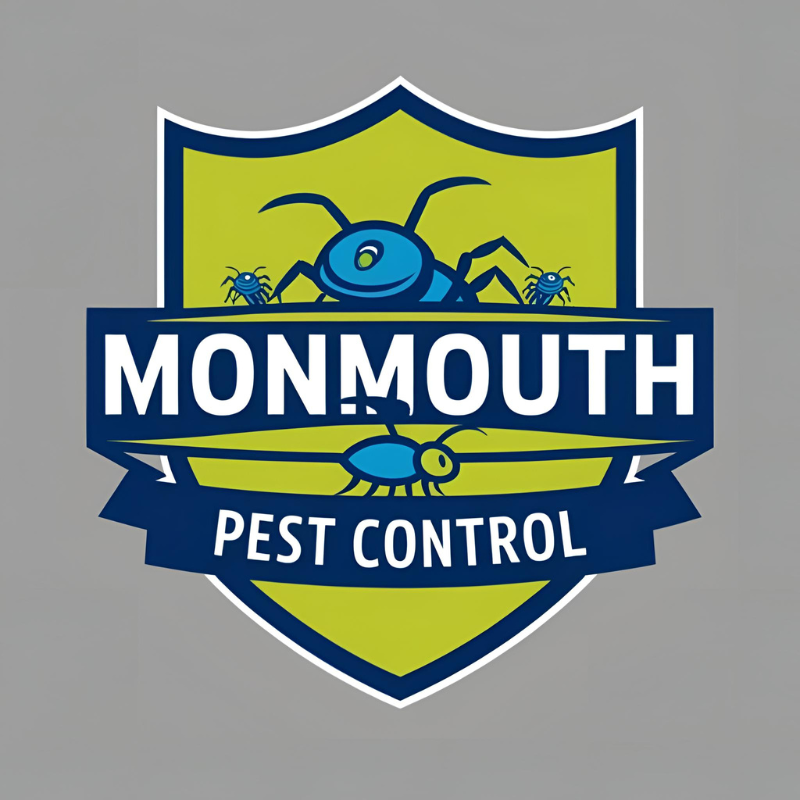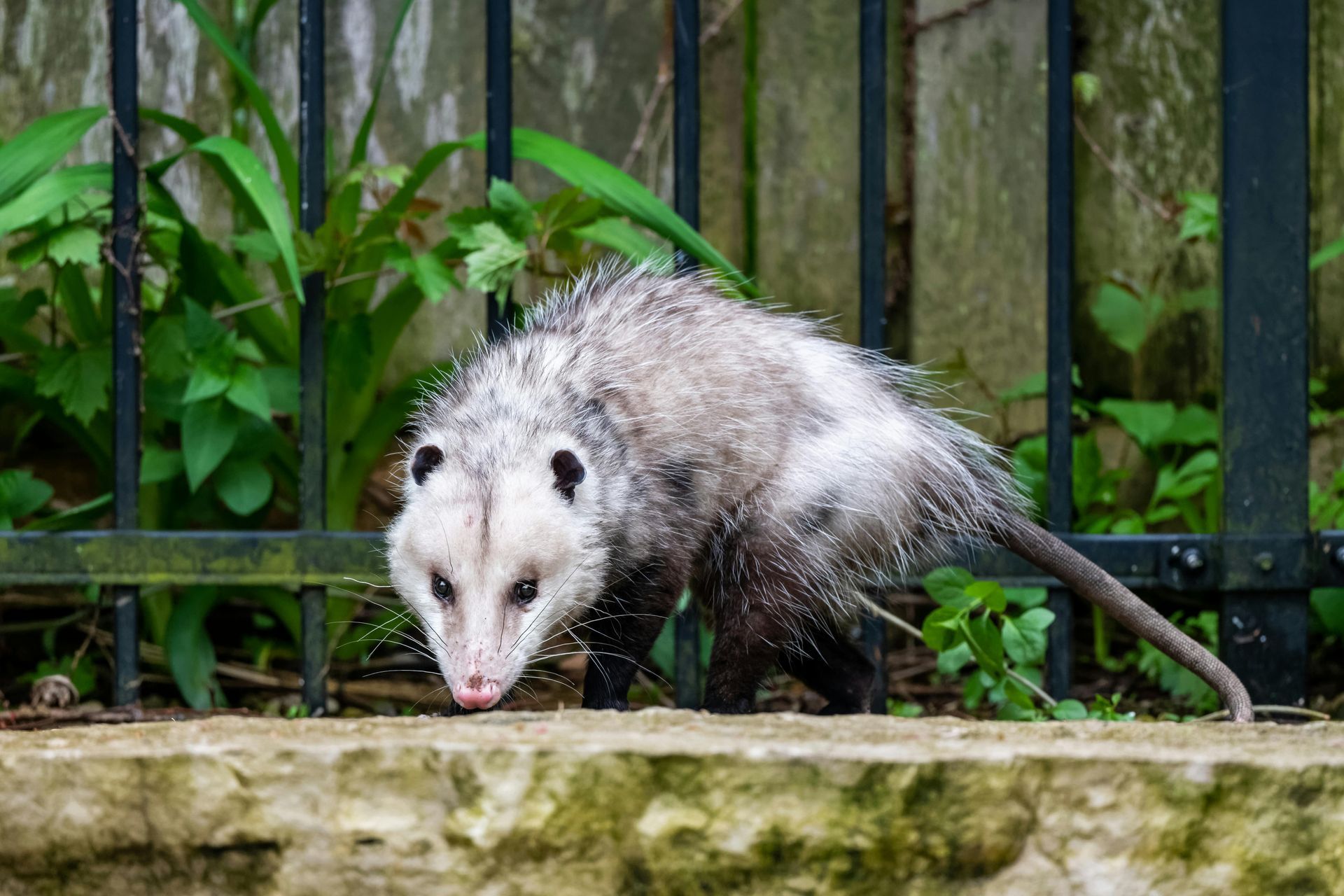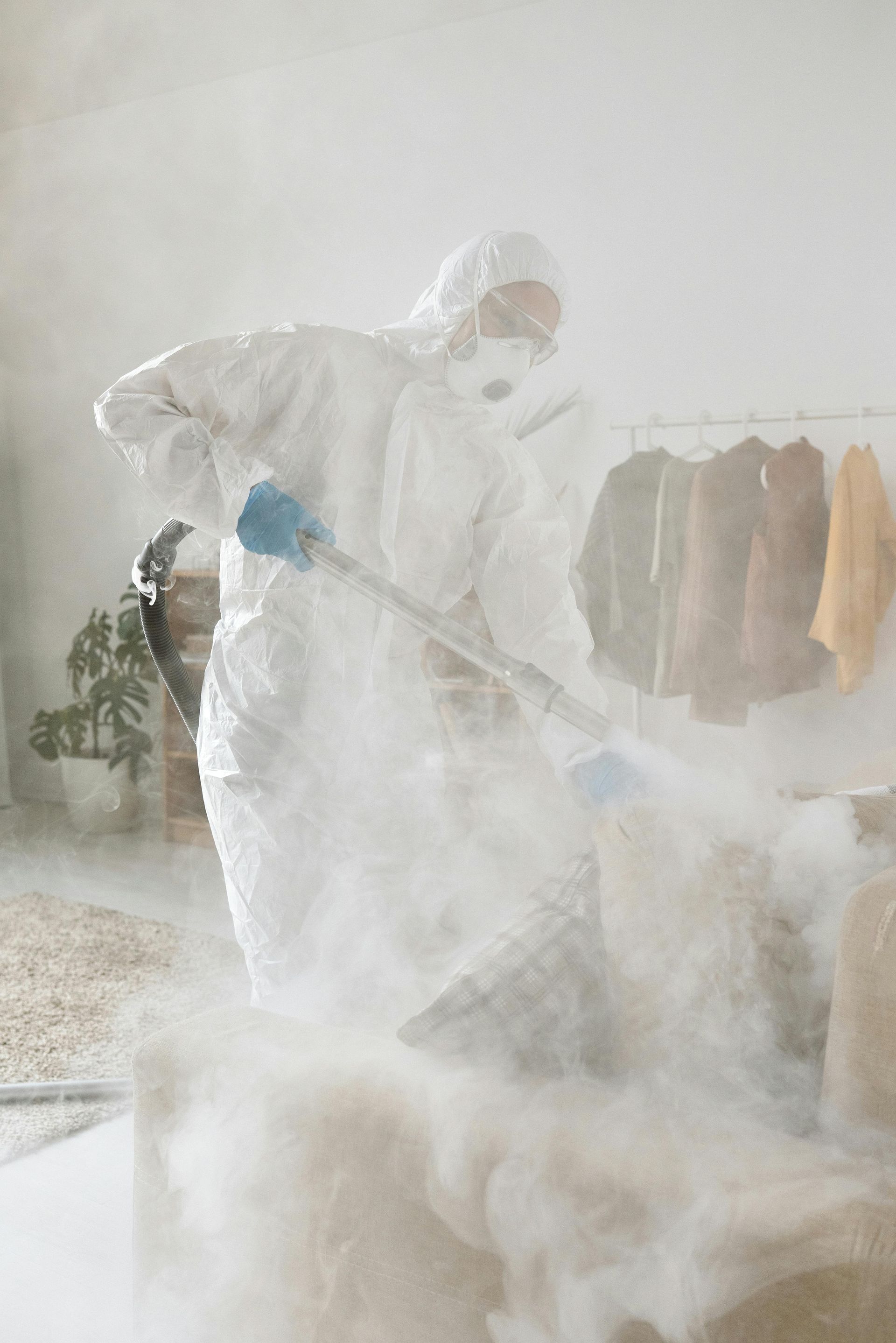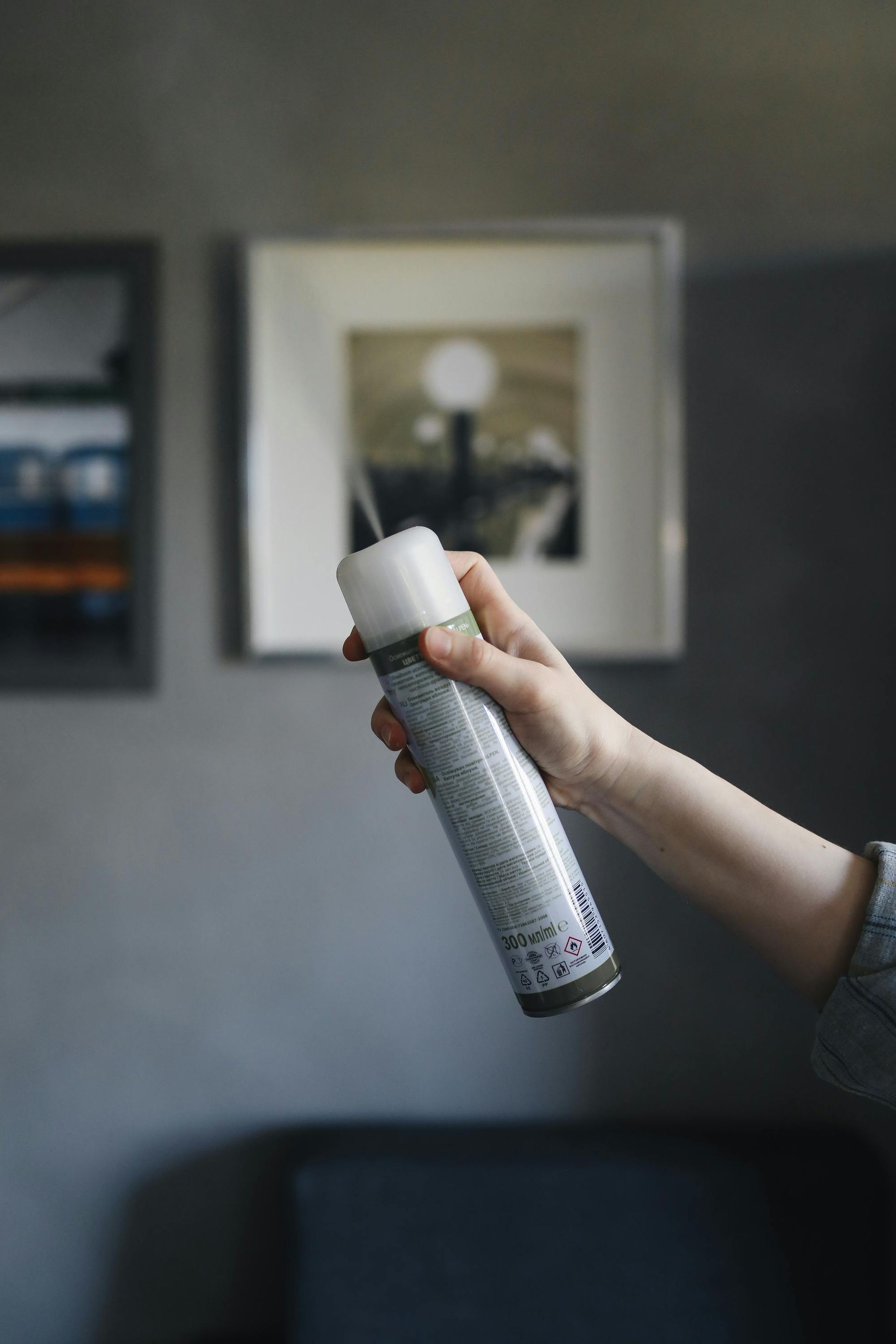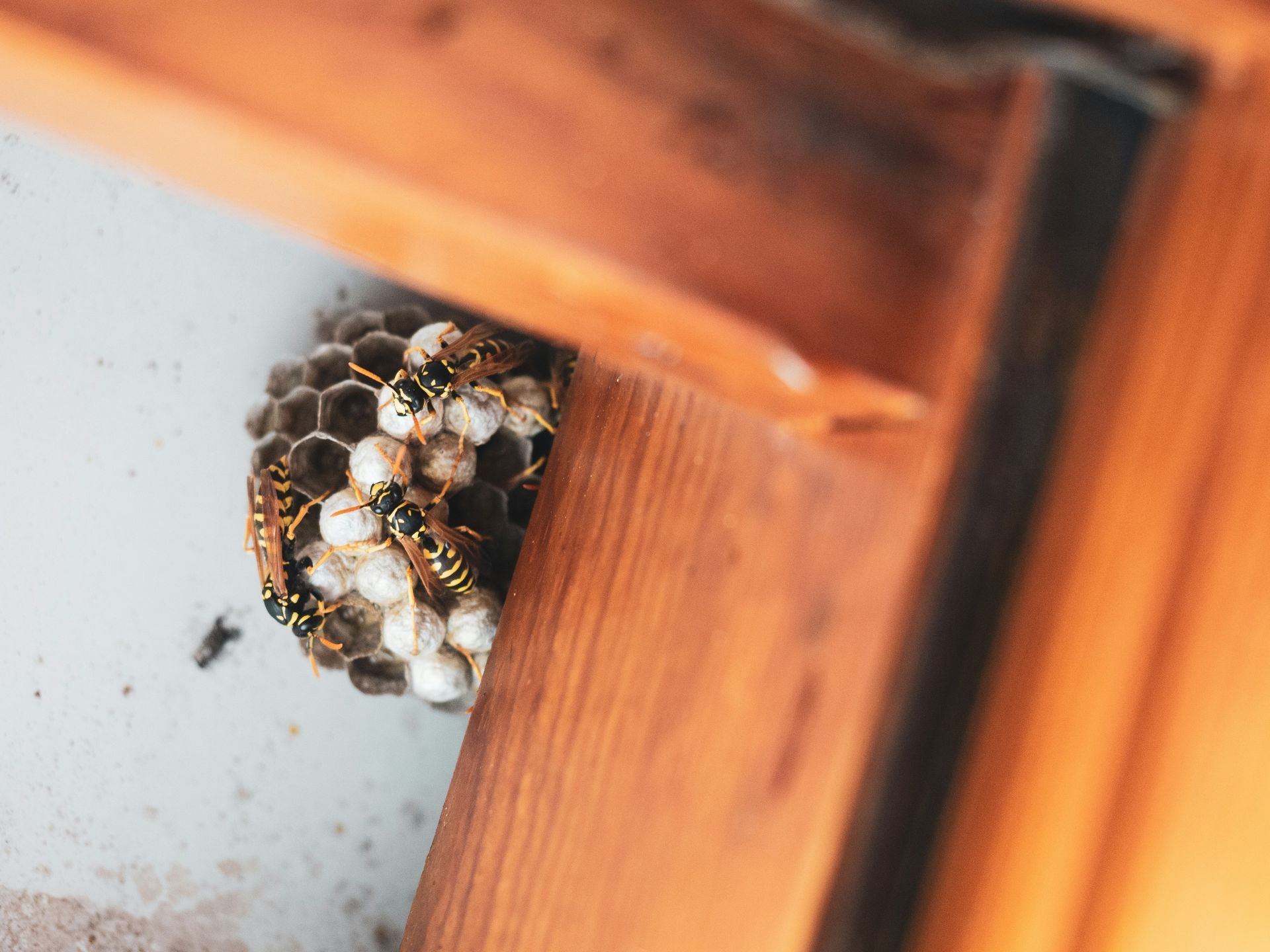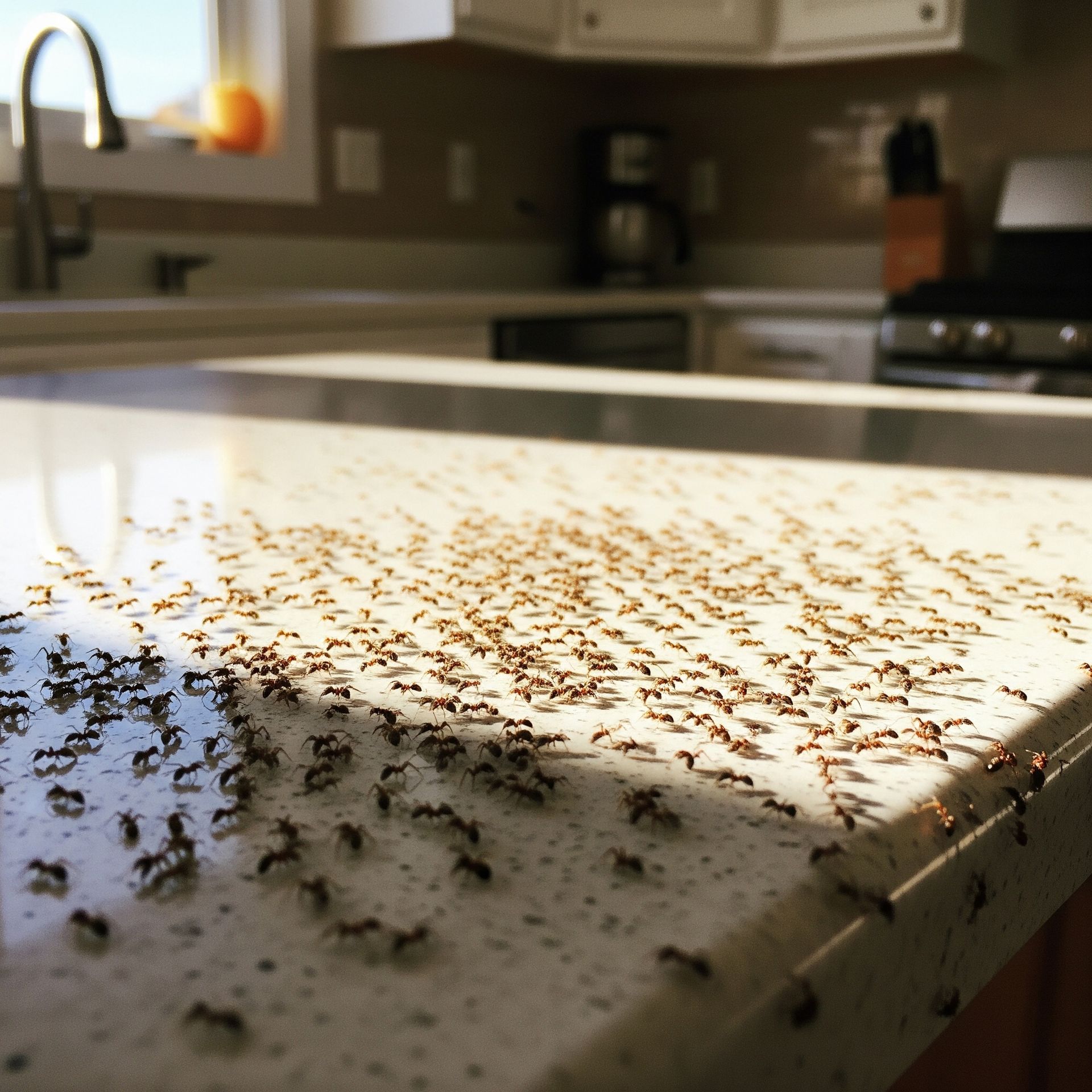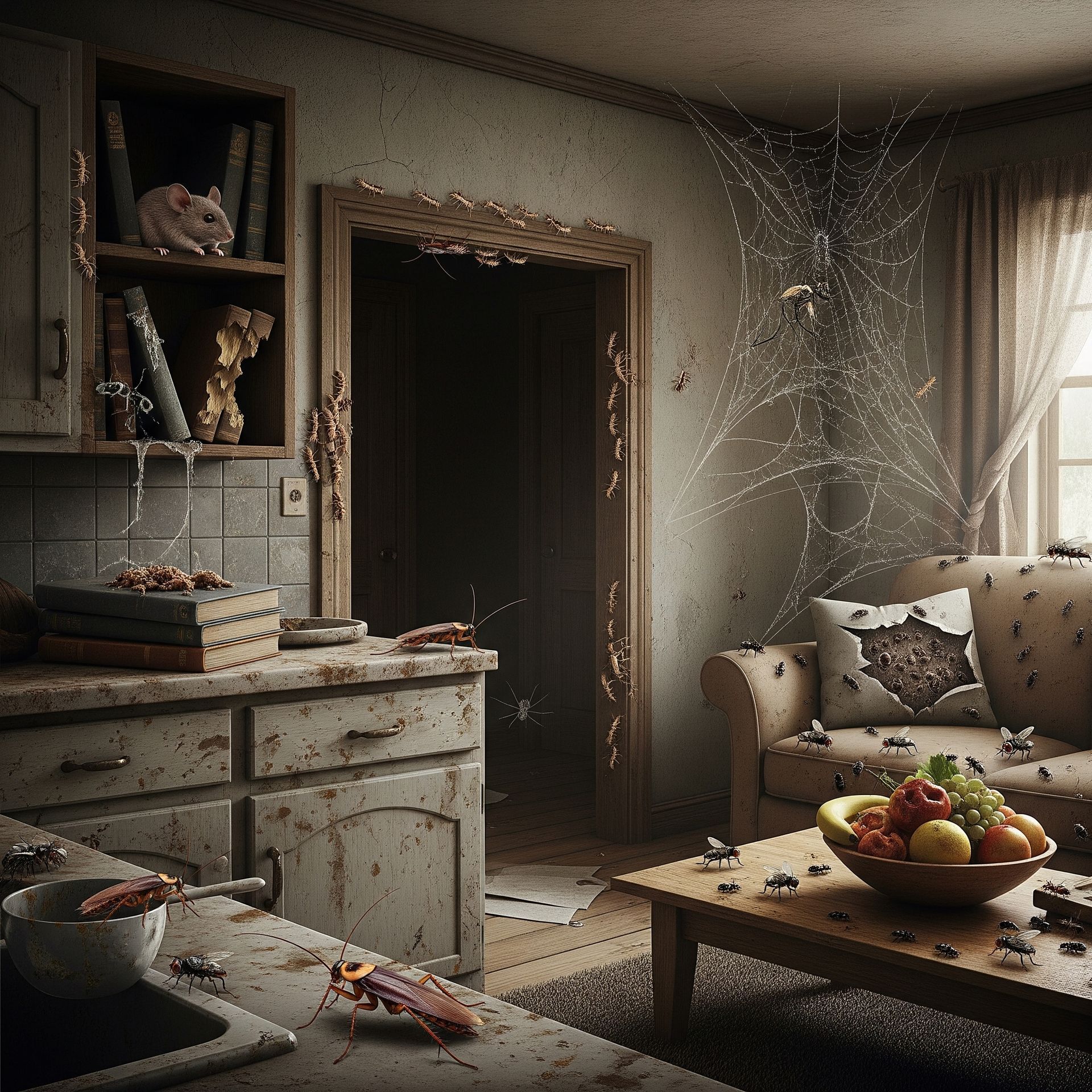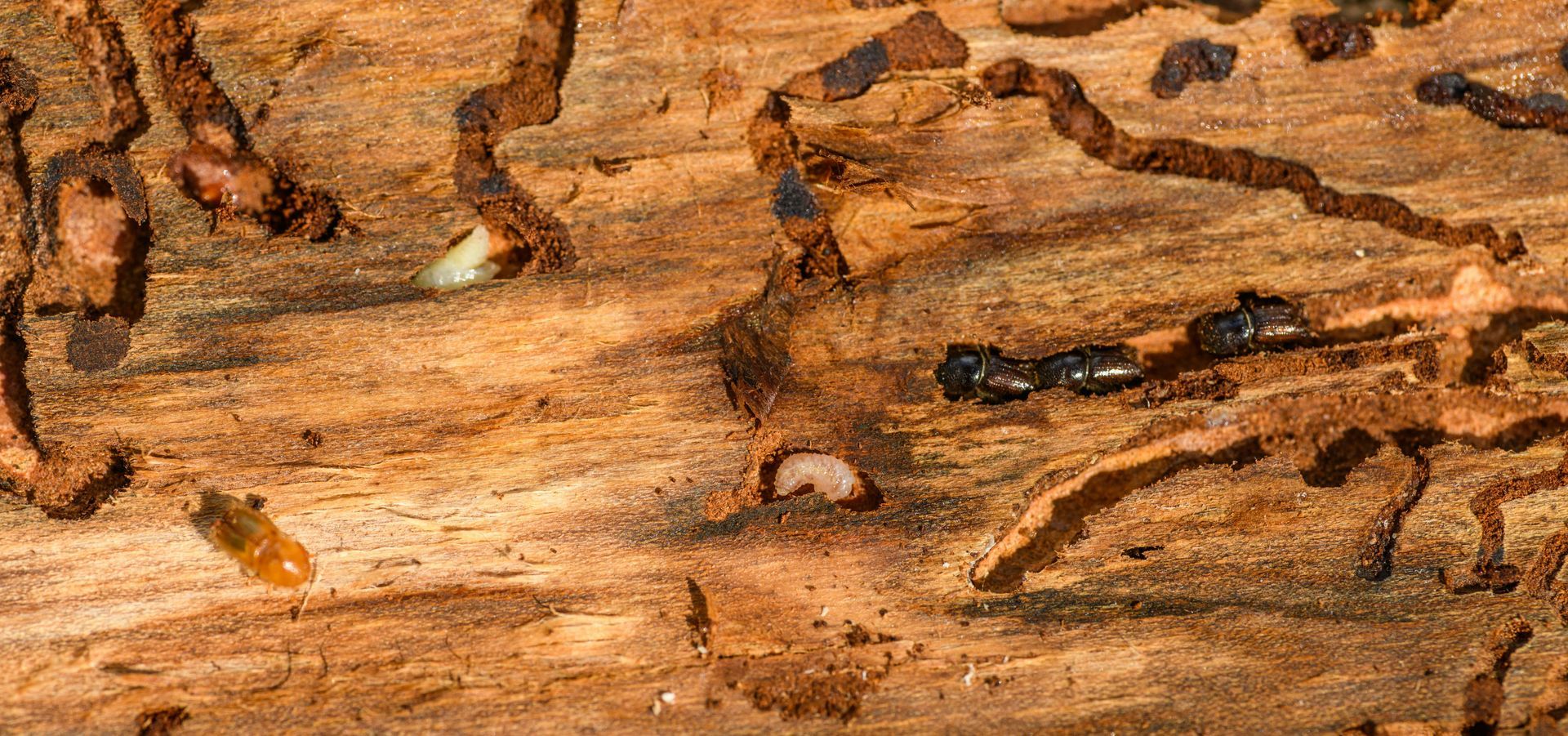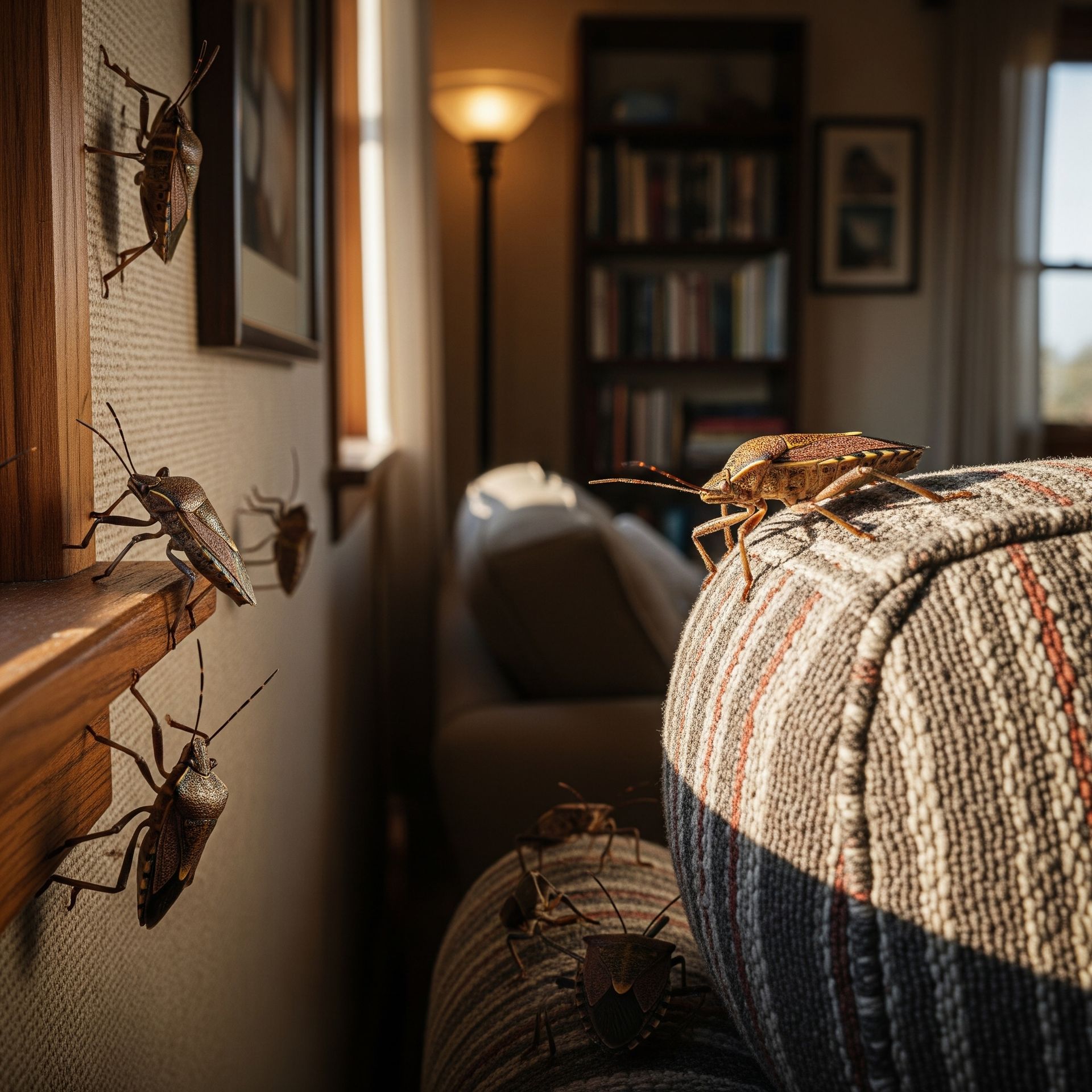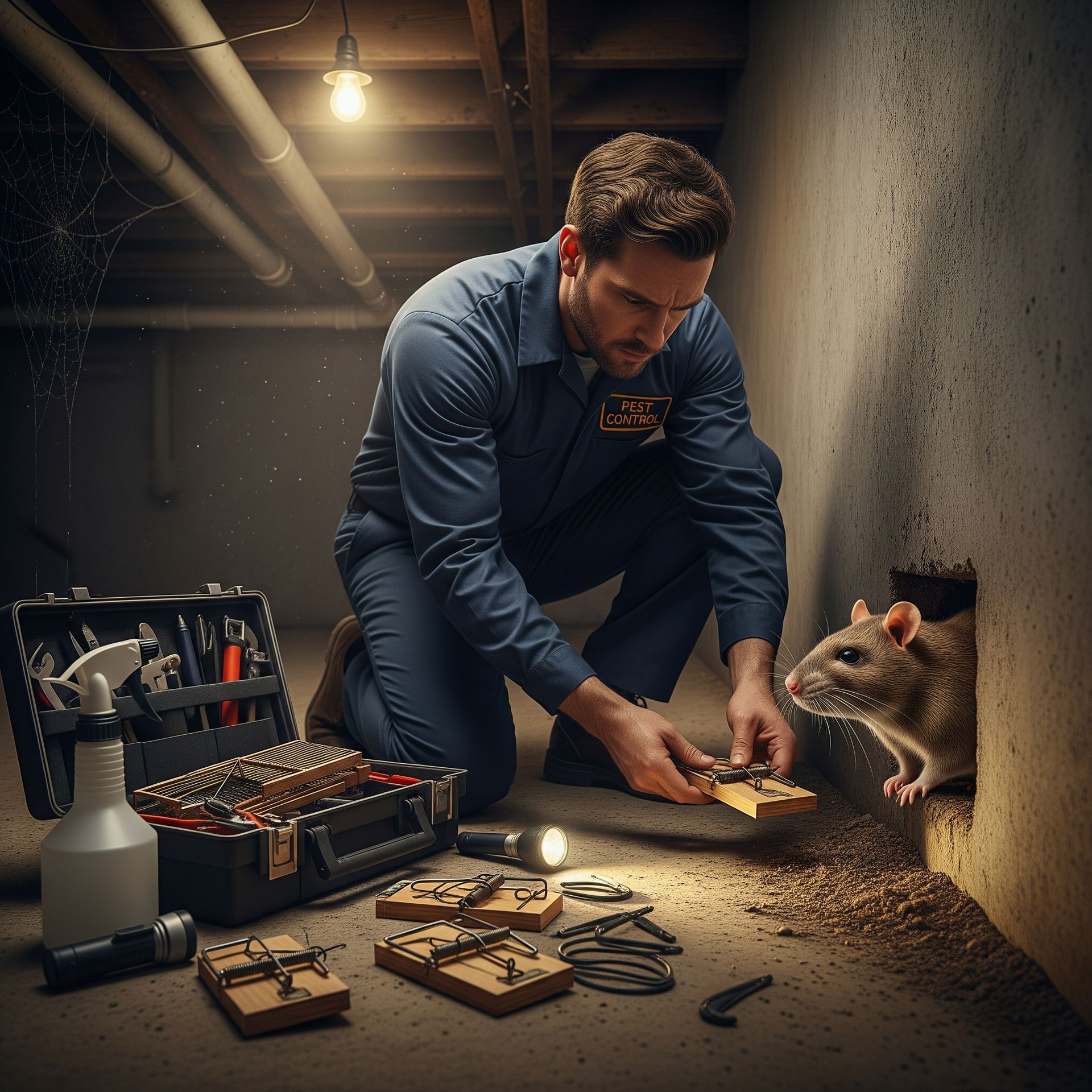Common House Spiders in NJ and How to Identify Them
If you spot a small, brown spider spinning messy, tangled webs in your NJ home, chances are it’s an American house spider—harmless and good at pest control. Watch for the violin-shaped mark if you think you’ve met a brown recluse; it prefers quiet spots like basements.
Cellar spiders hang out in undisturbed corners, trapping other bugs and even rival spiders. Curious? Stick around to get the scoop on these eight-legged roommates and how to handle them safely.
Yet, regardless of whether they are harmless or not, getting rid of insects and pests from your home is important to your family's health. Hence, seeking help from professional pest exterminators is your starting point.
Key Takeaways
- Common house spiders in NJ include the American house spider, brown recluse, and cellar spider, each with distinct markings and web types.
- American house spiders are small, brown, with messy webs and legs covered in tiny hairs for surface grip.
- Brown recluse spiders have a violin-shaped mark on their back and prefer quiet, undisturbed areas like basements.
- Cellar spiders create tangled webs, trap other pests, and are often found in dark, undisturbed corners.
- Identify spiders by body shape, color patterns, web structure, and common home locations like corners and basements.
Identifying the Common House Spider
Wondering how to spot a common house spider when it scurries by? First, watch its spider behavior—these little guys usually hang out in quiet corners, moving quickly but rarely aggressively. They’re not out to scare you, just hunting for tiny insects.
You’ll often find them near windows or in basements, places where food is easy to catch. Their web types are another clue: common house spiders spin messy, tangled webs rather than those neat, circular ones you see in gardens. These webs look like a cozy, irregular net, perfect for trapping unsuspecting bugs.
If you catch a glimpse of a small, brownish spider darting into one of these webs, you’re likely looking at a common house spider. Recognizing these habits and web styles helps you feel more connected to the little creatures sharing your space, turning “ew” into a nod of understanding.
After all, knowing is half the battle!
Characteristics of the American House Spider
You’ll notice the American house spider is pretty small, with a brownish body and some subtle stripes that help it blend in around your home.
Its web is a messy tangle of silk strands, not the neat circles you might expect.
Let’s check out what makes this little spider’s look and web so unique, and why it’s hanging out in your house.
Physical Appearance Traits
Although the American House Spider mightn't win any beauty contests, it has some pretty interesting features you’ll want to know about.
Its body segmentation is clear and helps you spot it easily—two main parts, the cephalothorax and abdomen, make up its shape. The coloration is usually a blend of brown and tan, with subtle patterns that blend right into your walls or corners. It’s not flashy, but that’s part of its charm.
When you look closely, you’ll notice:
- Small size, typically under half an inch
- Faint stripes or spots on its back
- Legs covered in tiny hairs, perfect for gripping surfaces
- Web coloration that often matches its surroundings, aiding in stealth
Knowing these traits helps you recognize your tiny, eight-legged roommate in NJ.
Typical Web Structure
Now that you know what the American House Spider looks like, let’s check out where all that action happens—the web.
These spiders are pretty clever architects, spinning messy, irregular cobwebs in corners, basements, or behind furniture. Unlike the classic, neat orb webs you might picture, American House Spider webs are more like a cozy, tangled fortress made of sticky spider silk.
This web type helps them catch all kinds of unwelcome insect visitors. If you spot one, you’ll notice the silk isn’t just strong—it’s stretchy and super sticky, perfect for trapping prey.
Recognizing the Brown Recluse Spider
You might think the brown recluse is just another spider, but it has some unique features you'll want to spot.
It’s usually light to dark brown with a violin-shaped mark on its back, and it prefers quiet, undisturbed places like closets or basements.
Knowing where it likes to hang out and how it behaves can help you avoid any unwanted surprises.
Physical Characteristics
If you’ve ever wondered how to spot a brown recluse spider, you’re not alone—it’s a tricky little creature to recognize. Understanding its physical characteristics can help you feel more confident.
This spider’s unique spider anatomy and subtle color variations set it apart, but you have to look closely.
Here’s what to keep an eye on:
- Size: About the length of a quarter (roughly 1/4 to 3/4 inch)
- Color: Light to medium brown, sometimes with yellowish or grayish tones
- Marking: A violin-shaped mark on its back, with the neck pointing toward the abdomen
- Legs: Long, thin, and uniformly colored without stripes or bands
Habitat and Behavior
Knowing what a brown recluse looks like is just the start—figuring out where it likes to hang out and how it behaves can really help you spot one before it surprises you.
These spiders prefer quiet, undisturbed places like closets, basements, or under furniture—classic spider habitats that you might overlook. They’re shy and tend to avoid people, so you’re more likely to find them hiding than roaming around.
When it comes to spider behavior, brown recluses are mostly nocturnal, coming out at night to hunt for small insects. So, if you’re checking your shoes or laundry, keep an eye out in those dark corners.
Understanding where they live and how they act helps you feel a little more in control—and less like you’re sharing your space with an unwelcome roommate.
The Role of the Cellar Spider in NJ Homes
Though cellar spiders might look a bit spooky with their long, skinny legs, they actually play a helpful role in NJ homes. When you learn about cellar spider behavior and their preferred cellar spider habitat—like cool basements and quiet corners—you’ll see they’re more friend than foe.
These spiders help keep your home’s little pest problems in check by eating other bugs you don’t want hanging around. Plus, their webs catch dust and debris, acting like tiny natural vacuum cleaners.
Here’s why you might want to appreciate these lanky neighbors:
- They control populations of annoying insects like mosquitoes and flies
- Their webs trap other spider species, reducing competition indoors
- They prefer undisturbed areas, so they’re not usually in your way
- They rarely bite and are harmless to you and your pets
How to Spot the Wolf Spider Indoors
While cellar spiders quietly mind their own business in the corners, wolf spiders have a whole different vibe when they wander indoors. You’ll notice their quick, scurrying moves—classic wolf spider behavior—often catching you off guard during indoor sightings.
They don’t spin webs to trap prey; instead, they hunt like tiny furry ninjas, which makes spotting them a bit easier if you know where to look.
Here’s a quick guide to help you spot these speedy visitors:
| Feature | What to Look For |
|---|---|
| Size | About 1 to 1.5 inches long |
| Color | Brownish with darker markings |
| Movement | Fast, sudden bursts |
| Time Active | Mostly at night |
Keep your eyes peeled, especially in dimly lit areas. Remember, wolf spiders are more curious than harmful, so spotting one indoors is just a sign they’re exploring your space, not invading it.
Understanding the Hobo Spider’s Appearance
If you’ve ever come across a hobo spider, you probably noticed it doesn’t look like your typical web-spinner.
These spiders have a distinct vibe, and knowing a few hobo spider identification tips can help you spot one without confusion. They’re more about speed and hunting than weaving delicate webs.
Here’s what you should look for:
- Medium size, roughly the length of a quarter, with long legs that look a bit gangly.
- Brownish color with a subtle pattern of chevrons or V-shaped marks on their back.
- A slightly hairy body that glistens under light, giving them a bit of a scruffy look.
- Eyes arranged in two rows, with the front row appearing almost straight.
Once you know these signs, you’ll feel more confident recognizing a hobo spider in your home or yard—and join the club of folks who get these unique spiders.
Tips for Safely Managing House Spiders
Since spiders can be helpful little pest controllers, you don’t want to go all ninja on them right away. Instead, try some simple preventive measures to keep them at bay.
Keep your home tidy, vacuum regularly, and seal cracks where spiders might sneak in.
If you spot one, don’t panic! Safe removal is easier than you think. Grab a jar, gently cover the spider, slide a piece of paper underneath, and carry it outside. It’s like giving them a little field trip away from your space.
However, if you suspect heavy infestation in your home, you will need professional pest control services.
Frequently Asked Questions
Are House Spiders in NJ Harmful to Pets?
You don’t need to worry much about spider bites harming your pets, as most house spiders aren’t dangerous. Still, for pet safety, keep their spaces clean and watch for any unusual behavior just in case.
Do House Spiders Help Control Other Pests?
You might not know that spiders consume up to 2,000 insects yearly! Their pest control skills stem from spider behavior, helping you naturally reduce bugs at home. Embrace these allies and join others valuing eco-friendly pest control.
What Time of Year Are House Spiders Most Active?
You’ll notice spider behavior peaks during warmer months, following seasonal patterns. They’re most active in late summer and early fall, helping keep your space pest-free, making you feel connected to nature’s rhythm and balance.
Can House Spiders Survive Outdoors in NJ Winters?
Imagine a spider burrowed under leaves, using spider adaptations like antifreeze proteins for winter survival. You’ll find some can survive NJ winters outdoors, but many seek cozy indoor spots to stay safe and belong through the cold months.
Are There Natural Repellents for House Spiders?
You can use natural remedies like essential oils—peppermint, tea tree, or lavender—to repel spiders. They’re safe, effective, and help you create a welcoming space where everyone feels comfortable and connected.
Final Thoughts
Believe it or not, the average home has about 200 spiders lurking around, mostly harmless little guys just doing their thing. Now that you can spot the common house spiders in NJ, you’re less likely to freak out next time you see one.
Remember, most of these spiders actually help keep pests away, so they’re kinda like tiny roommates you don’t mind having around. Just keep an eye out for the brown recluse, and you’ll be all set!
Whether you're dealing with spiders, rodents, or other home pests, Monmouth Pest Control is here to help.
Contact us today for a free consultation. With over 50 years of combined experience, our licensed and insured team is dedicated to offering personalized solutions—because we treat your home like our own.
